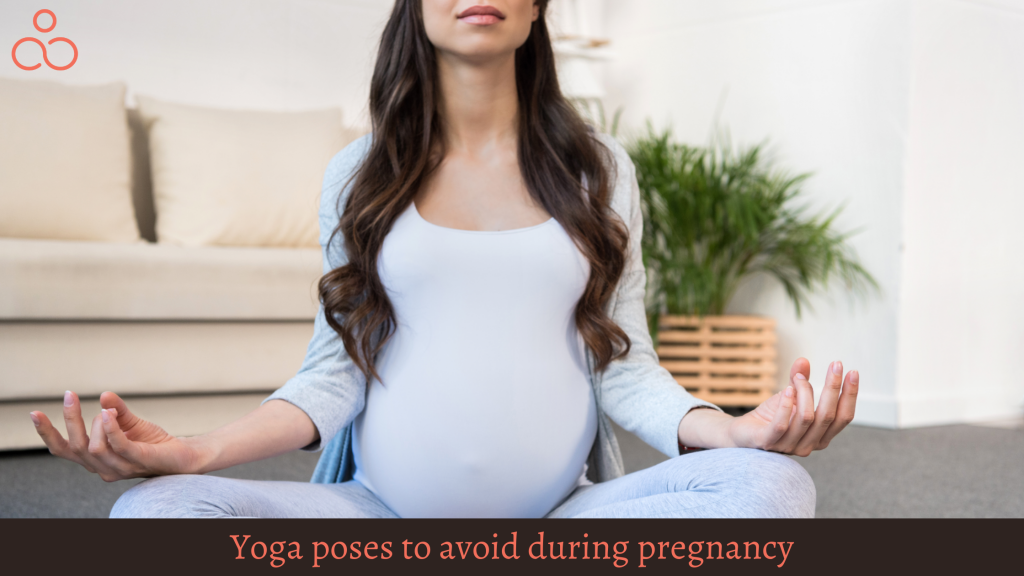Congratulations, soon-to-be mama! Pregnancy is a beautiful experience for women who are about to step into the world of motherhood. Having said that, you will start to notice that your body is changing every week when you are growing a child. Your organs start to make room by shifting and squeezing together for your expanding uterus. In addition, all the hormonal changes running through your blood have a different reaction on your body system and how you feel overall.
While your body is hard at work, you can start to feel aches and pains at various stages of your pregnancy. Fortunately, a very special form of yoga known as prenatal yoga can rescue you from physical discomfort and prepare you for the magical journey of childbearing and childbirth. Hold your horses, before you roll out your Yoga mat and start practicing, there are certain yoga poses to avoid during pregnancy.
Is it Safe to Practice Yoga During Pregnancy?
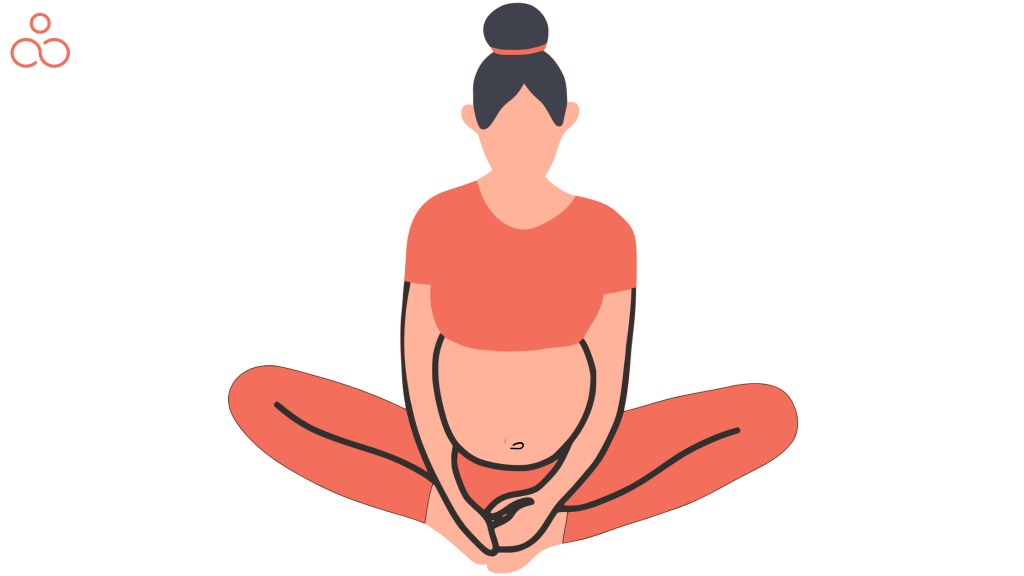
The answer is yes, but with certain modifications. Yoga offers amazing health and mind benefits throughout all three trimesters of pregnancy. If your body is already familiar with yoga poses, all you need to do is confirm that it’s safe to gradually resume your modified yoga practices by consulting with your gynecologist first. Having said that, some yoga poses with or without modifications are effective and safe, while there are some you must omit, like these poses to avoid during pregnancy.
The first and foremost way to ensure safety in any yoga session during pregnancy is to focus on how you are feeling. If there are any discomforts in your body, we highly recommend you to take a step back and call it a day!
Go Easy, Mama
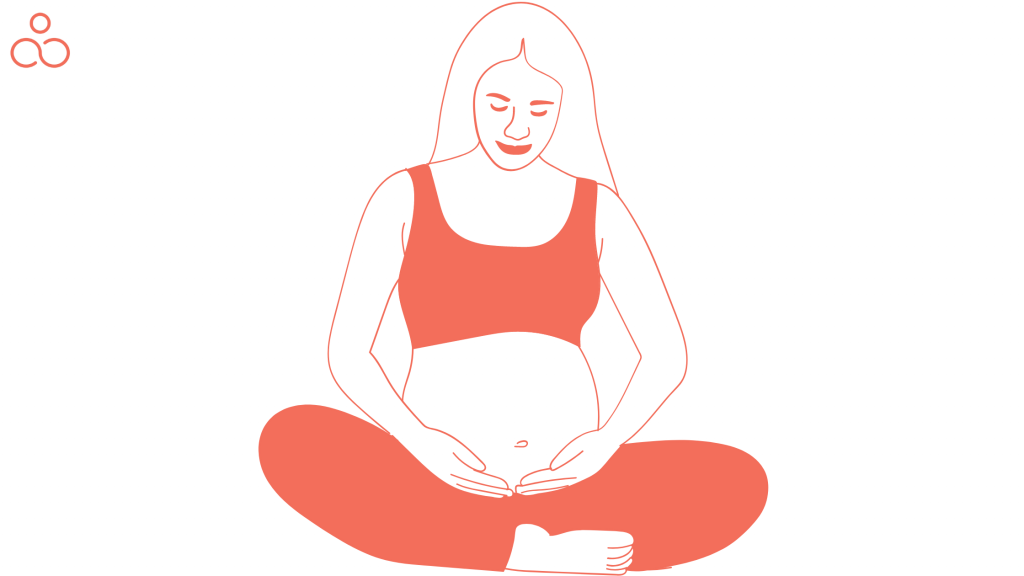
As a rule of thumb, introducing any form of exercise during pregnancy is not the safest choice. Simply put, if your body is used to certain physical movements, you can consider continuing your practices after being well-informed about the dos and don’ts. If you have been into intensive forms of exercises like HIIT (High-intensity interval training) and strength training, perhaps it’s not safe for you to continue such aggressive movements.
Shifting to prenatal yoga is a great way to build stability in your lower back and improve blood circulation. It also helps in strengthening the muscles around your pelvic and uterus. Moreover, yoga is much more than just offering physical benefits; it also guides you to stay calm and relaxed, which is important for all moms-to-be. Prenatal yoga especially focuses on cultivating your emotional space by connecting you to your inner self and self-consciousness.
Poses During Different Stages of Your Pregnancy
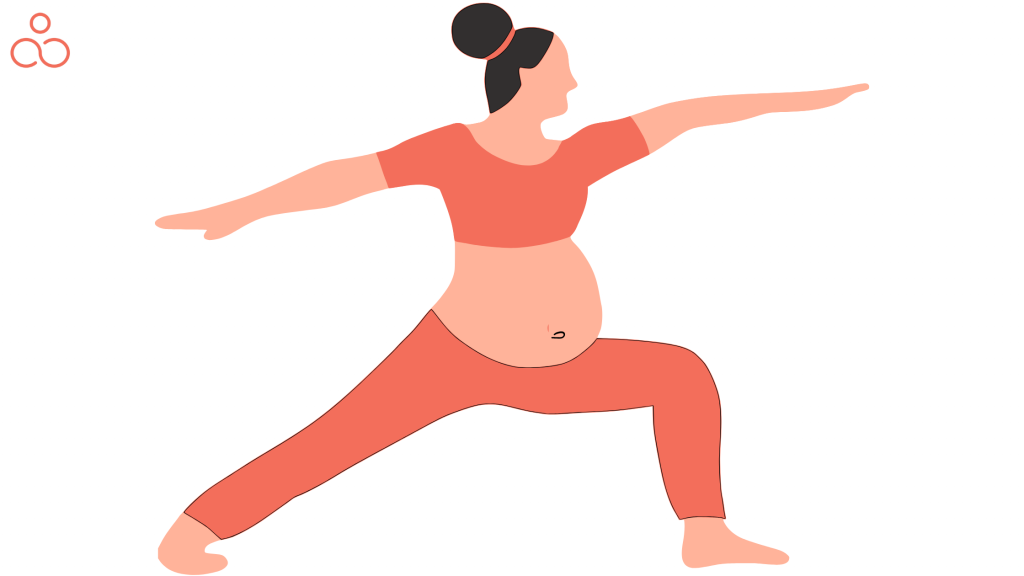
Firstly, you have to take into consideration that your body is going to go through different changes during each trimester. So it’s ideal to proceed accordingly.
First Trimester
Listen to your body. This is the time when you’ll be experiencing changes in terms of how you feel, both mentally and physically. Nausea, fatigue, and exhaustion are symptoms of morning sickness that you will come across during your first trimester. When you are growing your baby, early on in your pregnancy, you’re also at the highest risk for miscarriages. Yes, it’s still safe to practice in the first-trimester yoga poses, but it does vary from person to person.
Twists, hot yoga, and intensive balancing poses that could overheat your body should be avoided at the early stages of your pregnancy. It’s advised to take it easy and let your body do its magic. Talk to your doctor if you intend to start practicing yoga, we highly recommend you to pay attention to cues for any discomfort.
Second Trimester
The second trimester of your pregnancy is usually the time when your body gets used to the fact that there is a tiny human growing inside you. Risk factors are also less, so this is the time when you can incorporate a yoga regime. Your belly will start to expand, and you’ll also start to feel a little heavier than usual. It’s best to enroll in pregnancy yoga classes where your poses are being monitored by a prenatal yoga instructor.
You should also do your research about the poses you must avoid to steer clear of accidents or injuries. Some of the more rigorous poses will also need to be modified to suit your pregnancy. Prenatal adaptations during the second trimester are important as they serve the purpose of accommodating your growing belly and preventing compression of the uterus.
Third Trimester
Your pregnancy is at its peak during the third trimester. The rapid hormonal changes that increase estrogen, relaxin, and progesterone are likely to kick in and impact your yoga poses. Estrogen is referred to as the female steroid hormone that promotes development and maintenance of the body. Relaxin is a hormone discharged from the placenta that helps the cervix to dilate and prepare the uterus from labor. Lastly, progesterone is another steroid hormone released by the corpus luteum that prepares the uterus for pregnancy.
Even the most experienced yogis have felt the need to slightly modify their practice and approach each pose with fresh eyes. During your final trimester, you have to be more cautious about your balance, flexibility, and your shifts during poses, more like happy baby-safe poses. Having said that, there are some amazing prenatal yoga benefits that focus on preparing your body for labor. From integrating breathing techniques to mindfulness meditation, all are effective ways to enjoy pregnancy-safe yoga. You don’t want to overwork your body at this stage, therefore be completely sure of what’s safe or unsafe in terms of practicing yoga during your third trimester. Keep reading to learn more about the importance of safety before jumping into the benefits of yoga during pregnancy.
Safe vs Unsafe

Right now, you should only be focused on your health and your baby’s growth. It is common to get all excited when you come across beautiful pregnancy yoga poses—and you immediately start to search for the best yoga pose during pregnancy. Slow down, allow your body to grow at its own pace while you focus on preparing for labor. If you feel you’re ready to explore pregnancy yoga, then you have to be cautious about the risk factors it brings as well.
Abdominal
You must avoid poses that actively put pressure on your abdomen, especially requiring you to contract your abdomen such as boat and low boat poses. You can bounce back to abdominal exercise during your second and third trimester only if your doctor allows you to continue. In fact, abdominal poses are known to support a healthy and strong back that helps in pushing during labor.
Twisting
Twisting is a big no from the moment you find out about your pregnancy until you push your baby out. But why is twisting bad? Sometimes doctors approve open twists during the third trimester, and they can leave you feeling great. The rule is to approach twisting from the shoulders, and not from the abdomen. Your baby bump should stay intact without any bends and folds. Think of it as a rotation of your upper body, emphasizing on your shoulders, neck, and collar bones, rather than a twist.
Lying on Your Back
Once you have successfully started to track your second trimester, refrain from poses that require you to lie on your back. We are talking about month four and onwards. The reason behind this is that your uterus starts to expand rapidly and become heavy. Lying on your back can press on the vein that runs to the right of your spine—the vena cava. It can lead to low blood flow to your heart, making you and your baby feel dizzy. It’s best to avoid Savasana on your back during your second and third trimesters.
Back Bends
Backbends are a big no-no too! They can overstretch your abdominal muscles, which is not good for your entire pregnancy. Focus on shifting the pressure on your upper back as opposed to your lower back by opening up your chest and upper back. If you’re confused about how to proceed, please just avoid attempting it, as you might end up injuring your lower spine, which can be dangerous.
Balance Poses
If you already have experience with balancing poses, it may be safe for you to continue them. But as mentioned earlier, be cautious and take it slowly. Your body is progressing and becoming heavier than before, and your balance may be off. Avoid unsafe yoga poses that have a high risk of falling, which is not safe during pregnancy. You could perhaps hold on to a sturdy bar or wall as support or use props like blocks, etc.
Breathing Techniques
Any rapid breathing exercises that require holding your breath or making quick movements should be avoided. You could practice nostril breathing as it helps you clear your mind and make you more aware of your body and mind. Also, this can be a great way to practice for labor, as in labor it is advised to breathe in through your nose and out through your mouth.
5 Yoga poses to avoid during pregnancy
Here is a list of five poses that you must avoid while doing yoga during your pregnancy. If you are already a part of a prenatal yoga class, your instructor will be well informed about the poses every mom-to-be should stay away from. If you are practicing at home, you must be aware of the reasons for avoiding these yoga poses during pregnancy. Honestly, every pregnant body is different, so we will provide you with a list of modified poses as an alternative that will give you similar results.
1. Extended side angle pose (Modification: Supported Side Angle Pose)
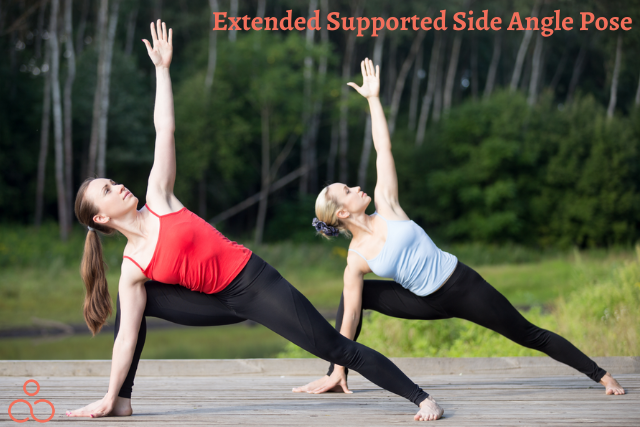
Revolved side angle pose requires you to twist along your midline, which is a big no for your growing bump. You could simply opt for a regular side angle pose as the revolved side angle pose is not safe during pregnancy. You will focus on opening up to one side by using the bottom arm to support you—in fact, this helps to open up your chest a lot more.
2. Full Wheel (Modification: Bridge Pose)
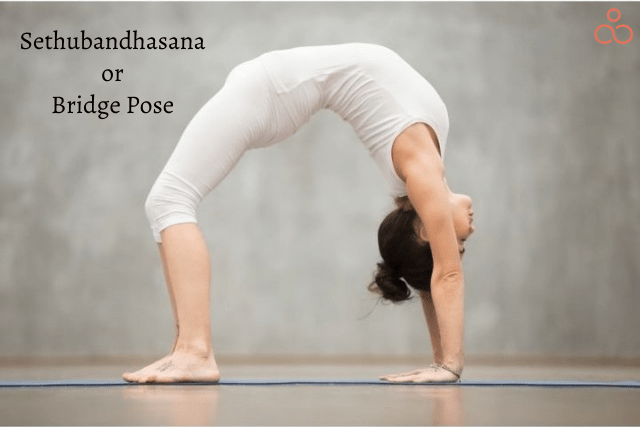
The Full wheel is only a must-avoid pose for expectant mothers who are not familiar with it. Don’t try to explore overstretching your muscles during pregnancy if you’re not used to it. If you are comfortable and confident doing a full wheel pose, then you can continue to do it. But you still may have to modify it beyond 24 weeks, sometimes 20 weeks if your tummy is bigger than usual. The modified version of this pose is a bridge pose.
3. Bow Pose
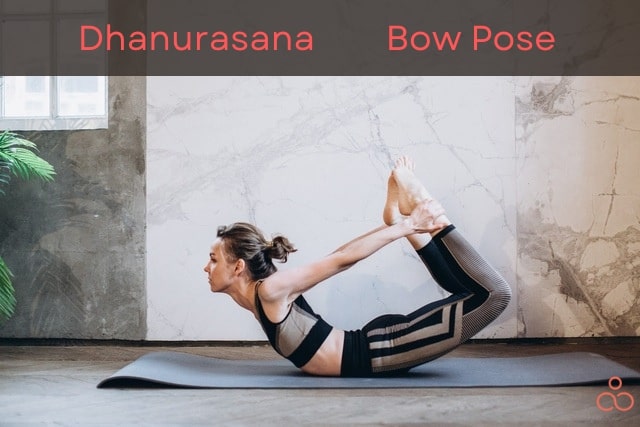
It’s advised to avoid lying belly-down during your pregnancy, including the first trimester. The next best option is a camel pose, which allows you to open and stretch your heart accordingly. It also helps to stretch your back, and for additional support, you can place your hands on your lower back for better grip.
4. Two legged forward bend
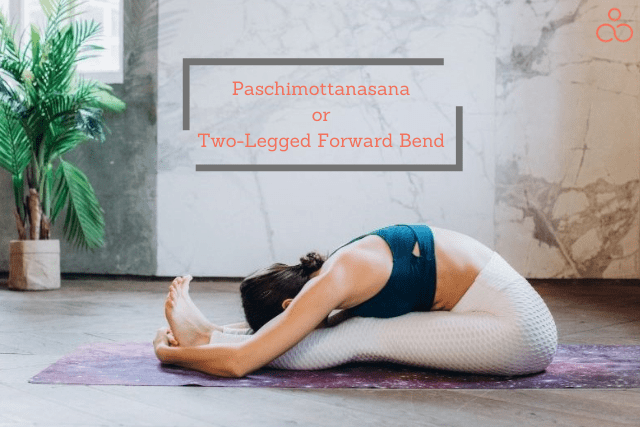
5. Revolved Chair Pose
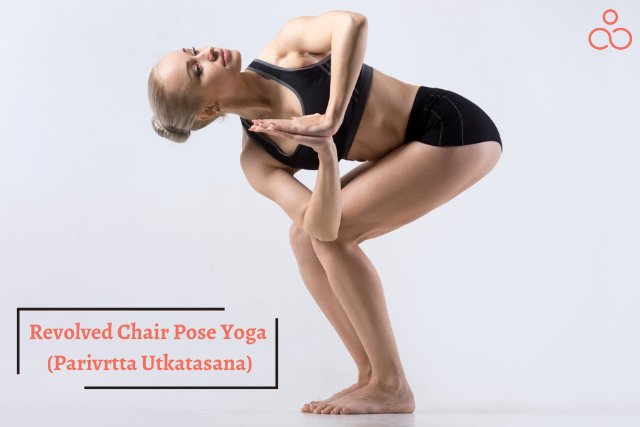
Twisting your belly or abdomen should be avoided all throughout your pregnancy. However, you are able to get similar benefits by customizing it a little bit. So instead of twisting and turning while pregnant, just simply widen your stand by using the bottom arm to support across your knees. Now raise the other arm bringing it to a comfortable position to open your chest.
Note: There are more poses that one should avoid during pregnancy, but there are no standard rules that need to be applied by every mom-to-be. For example, you could also look up inversion poses during pregnancy and find out whether your body is suitable for it or not. We have prepared a detailed list of poses to avoid while you are pregnant.
- Full wheel pose
- Bridge pose
- Bow pose
- Cobra pose
- Locust pose
- Full camel pose
- Upward facing dog
- Forward fold pose
- Twisted chair pose
- Full inversions pose
- Headstand
- Handstand
- Boat pose
- Abdominal poses
- Full sun salutations
- Jump-backs and transitions
- Breath retention techniques (please check for modifications)
When Can You Resume Your Regular Practice?
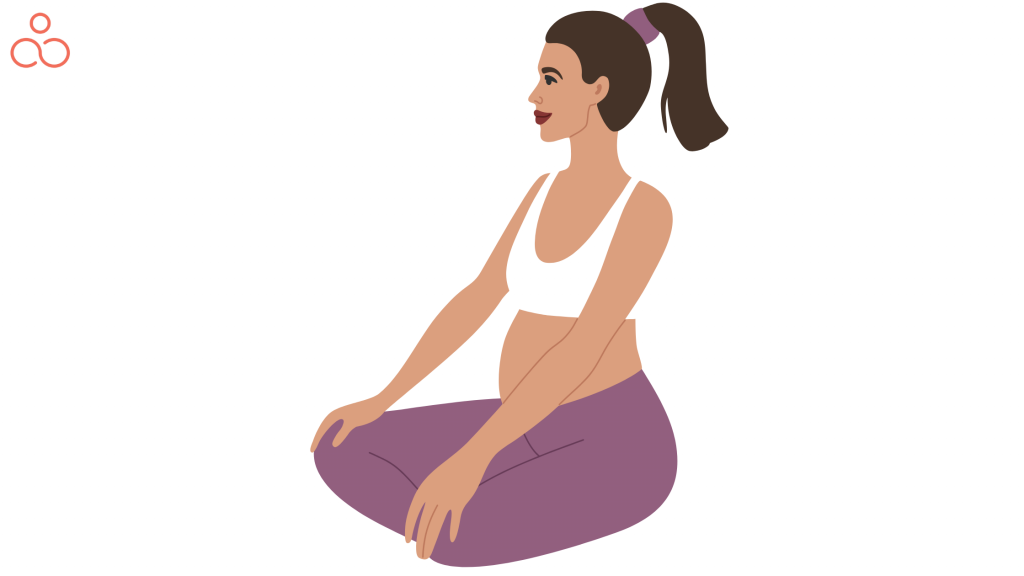
This question does not have a definite answer, to be honest. Technically and physically speaking, your regular practice should only resume after you have returned to your regular self. This could mean different things to everyone. A pregnant woman who has practiced yoga for the last 10 years religiously would not want to halt their yoga habits unless it is a complicated pregnancy. On the other hand, there could be an expectant woman who is suffering from prenatal anxiety who has chosen yoga as a stress reliever. You have to leave it to the current state of your body and mind; all you can do is to listen to the cues and act accordingly.
It’s okay to feel exhausted on certain days for yoga. Try to explore mantras, hand mudras and yoga nidra during those days. You will learn to focus on inner awareness that can help you to battle with challenges.
Conclusion
This brings us to the end of this article—and we truly hope you have been able to gain clarity about how you want to incorporate prenatal yoga into your life. If you have further concerns like “Is pigeon pose safe?” we strongly suggest you consult your doctor. Just one last reminder before you go: It’s true that exercise keeps you healthy during pregnancy, but proper nutrition and rest are also paramount. So don’t be hard on yourself, Mama; it’s time to rejoice and enjoy your baby bump.

